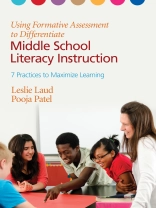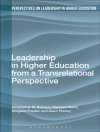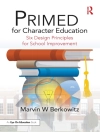Formative assessment and differentiated instruction made manageable
We all recognize the countless benefits of differentiated instruction. The challenge is in its implementation. Faced with a classroom of 25 students—each with very different needs—how can we possibly keep every student on track and motivated? Through formative assessment and efficient follow-up instruction. This start-to-finish guide will show you how through seven classroom-tested practices for maximizing student learning.
Established experts on this subject, Leslie Laud and Pooja Patel demonstrate how to:
- Establish new classroom norms
- Involve students in the use of assessment data and feedback to inform their next steps
- Clarify end-of-unit criteria to help map learning progression
- Apply assessment data to grouping students for tiered activities
- Differentiate assignments based on student readiness, characteristics, and interest
Best of all, Using Formative Assessment to Differentiate Middle School Literacy Instruction is packed with vignettes, sample worksheets, and charts to assist you through each step in the process. Armed with this toolkit, you′ll quickly discover new ways to keep all students engaged in their learning.
Despre autor
Pooja Patel M.Ed. is a learning specialist who is currently working as a middle school English and Humanities teacher at United Nations International School. She has taught a class on writing instruction at Bank Street College of Education. She also has presented at some national conferences, including the Council of Exceptional Children and the New York Branch of the International Dyslexia Association (NYBIDA). Additionally, she has published many articles in peer reviewed journals such as Preventing School Failure and Teaching Exceptional Children. She received a master’s degree from the reading specialist program from Teachers College, Columbia University. In addition to working in the general education classroom, she works with students one-on-one outside of the classroom.












